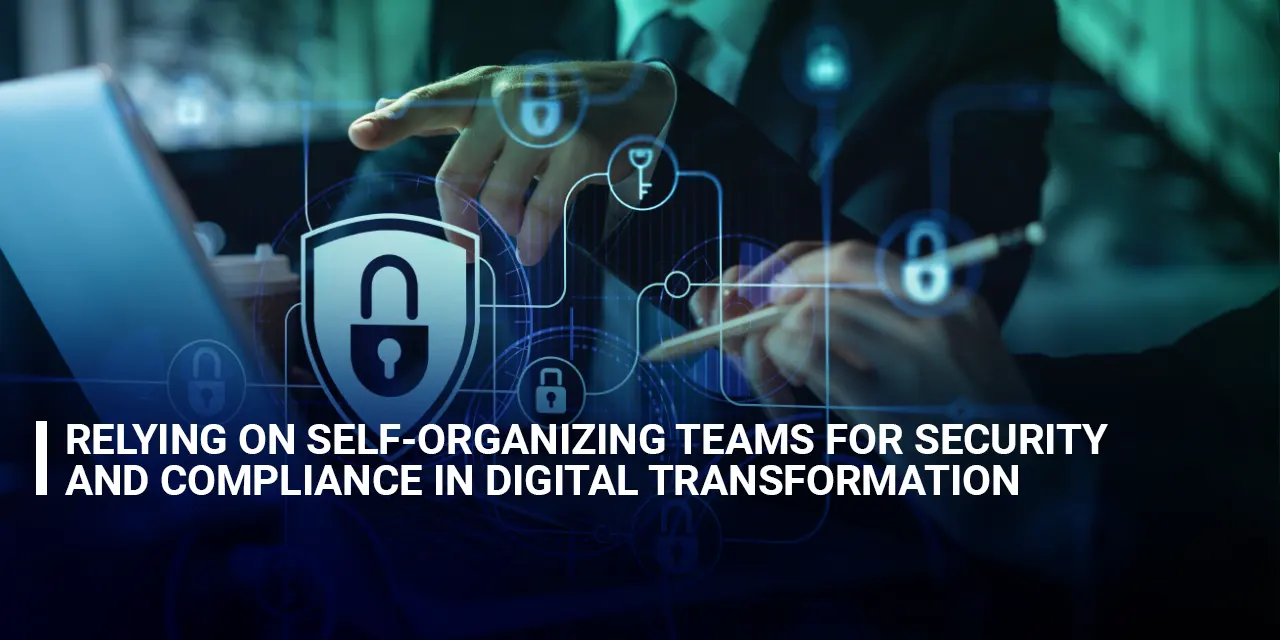Research
Share Knowledge
Brainstorm Ideas
The Rise of Self-Organizing Teams
Digital transformation is more than a technological shift; it is a comprehensive approach to reimagine how an organization operates and delivers value. Self-organizing teams, which have gained prominence in agile methodologies, are a fundamental component of this transformation. These teams are typically cross-functional, autonomous, and responsible for their work, allowing for quicker decision-making and a more agile response to changes.
Self-organizing teams are credited with various benefits, including increased employee engagement, faster product development and adaptability in an ever-changing business environment. However, as organizations march forward into the digital era, there is an inherent challenge - can self-organizing teams effectively meet the critical requirements of security and compliance?
The Security and Compliance Dilemma
Security and compliance are paramount in today's business landscape. Organizations must protect sensitive data, adhere to regulatory requirements, and ensure that their operations do not jeopardize their reputation or result in legal consequences. To achieve this, they often rely on strict protocols, procedures, and oversight.
In the past, hierarchical structures and centralized decision-making mechanisms allowed organizations to enforce security and compliance measures effectively. However, with the rise of self-organizing teams, there is a potential conflict between the autonomy and flexibility these teams offer and the need for robust security and compliance measures.
The Challenge of Autonomy
Self-organizing teams thrive on autonomy. Team members have the authority to make decisions, select tools and shape their work processes. While this autonomy fosters innovation and agility, it can also lead to security and compliance risks. Here are some challenges organizations may encounter:
1. Data Security
In self-organizing teams, sensitive data may be stored, accessed, or transmitted in various ways. Without centralized oversight, there is a risk of data breaches or mishandling.
2. Regulatory Compliance
Regulatory requirements are not typically a top-of-mind concern for self-organizing teams. Ensuring compliance with laws and standards might be challenging without proper guidance and oversight.
3. Uniformity in Practices
Self-organizing teams may employ diverse practices and tools, making it difficult to ensure that security and compliance measures are consistently applied across the organization.
4. Accountability
Assigning clear accountability for security and compliance issues can be challenging within self-organizing teams, as responsibilities are distributed.
Striking the Balance
While the autonomy and agility of self-organizing teams are valuable, it is essential to strike a balance between these attributes and the critical need for security and compliance. Here's how organizations can effectively navigate this challenge:
1. Clear Security and Compliance Guidelines
Establish clear and well-communicated security and compliance guidelines that all self-organizing teams must follow. Provide training and resources to ensure that team members understand their responsibilities.
2. Continuous Education
Security and compliance standards are not static. They evolve with the changing threat landscape and regulatory environment. Organizations must invest in continuous education to keep self-organizing teams informed and up to date.
3. Technology Integration
Leverage technology solutions that can help automate and enforce security and compliance measures. This includes encryption, access control and monitoring tools that can be seamlessly integrated into self-organizing teams' workflows.
4. Auditing and Monitoring
Regularly audit and monitor the activities of self-organizing teams to ensure that security and compliance measures are being followed. This can be done through automated tools and periodic reviews.
5. Collaboration with Experts
Collaborate with security and compliance experts who can provide guidance and support to self-organizing teams. These experts can help interpret regulations, assess risks and recommend best practices.
6. Reporting Mechanisms
Implement a clear reporting mechanism for security and compliance incidents. Encourage self-organizing teams to report any issues or potential vulnerabilities promptly.
How Can We Help?
ITPN has leading-edge capabilities, top-class experts and pioneering experience in this area. Please contact us if you have any questions or need assistance regarding our services.
Conclusion
The adoption of self-organizing teams in the digital transformation journey is undoubtedly a strategic move to enhance agility and innovation. However, the imperative for security and compliance cannot be ignored. Organizations must strike a balance between autonomy and oversight to ensure that their digital transformation initiatives do not compromise the security of sensitive data or result in non-compliance with regulatory requirements.
By establishing clear guidelines, providing education, leveraging technology, and collaborating with experts, organizations can empower self-organizing teams to embrace their role as transformational leaders while adhering to the necessary security and compliance measures. As digital transformation continues to reshape the business landscape, the successful integration of self-organizing teams and security and compliance requirements is essential for sustainable growth and resilience in a rapidly changing world.

